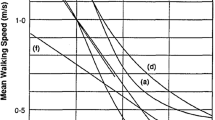Abstract
Fire stations are among the most crucial emergency facilities in urban emergency control system in terms of their quick response to fires and other emergencies. Location planning for fire stations has a significant influence on their effectiveness and capability of emergency responses trading off with the cost of constructions. To obtain efficient and practical siting plans for fire stations, various major requirements including effectiveness maximization, distance constraint and workload limitation are required to be considered in location models. This paper proposes a novel hierarchical optimization approach taking all the major requirements for location planning into consideration and bonds functional connections between different levels of fire stations at the same time. A single-objective and a multi-objective optimization model are established coupled with genetic algorithm (GA) with elitist reservation and Pareto-based multi-objective evolutionary algorithm for model solving. The proposed hierarchical location model is further performed in a case study of Futian District in Shenzhen, and the siting results justify the effectiveness and practicality of our novel approach.
Access this chapter
Tax calculation will be finalised at checkout
Purchases are for personal use only
Similar content being viewed by others
References
Farahani, R.Z., Fallah, S., Ruiz, R., Hosseini, S., Asgari, N.: OR models in urban service facility location: a critical review of applications and future developments. Eur. J. Oper. Res. 276(1), 1–27 (2019)
Paul, N., Lunday, B., Nurre, S.: A multi-objective, maximal conditional covering location problem applied to the relocation of hierarchical emergency response facilitie. Omega 66, 147–158 (2017)
Yu, W., Chen, Y., Guan, M.: Hierarchical siting of macro fire station and micro fire station. Environ. Plan. B: Urban Analytics City Sci. 48, 1972–1988 (2020)
Degel, D., Wiesche, L., Rachuba, S., Werners, B.: Reorganizing an existing volunteer fire station network in Germany. Socio-Econ. Plann. Sci. 48(2), 149–157 (2014)
Church, R.L., ReVelle, C.S.: Theoretical and computational links between the p-median, location set-covering, and the maximal covering location problem. Geogr. Anal. 8(4), 406–415 (1976)
Yang, L., Jones, B.F., Yang, S.H.: A fuzzy multi-objective programming for optimization of fire station locations through genetic algorithms. Eur. J. Oper. Res. 181(2), 903–915 (2007)
Yao, J., Zhang, X., Murray, A.T.: Location optimization of urban fire stations: access and service coverage. Comput. Environ. Urban Syst. 73, 184–190 (2019)
Aktaş, E., Özaydın, Ö., Bozkaya, B., Ülengin, F., Önsel, Ş: Optimizing fire station locations for the istanbul metropolitan municipality. Interfaces 43(3), 240–255 (2013)
Bolouri, S., Vafaeinejad, A., Alesheikh, A., Aghamohammadi, H.: Minimizing response time to accidents in big cities: a two ranked level model for allocating fire stations. Arab. J. Geosci. 13(16), 1–13 (2020). https://doi.org/10.1007/s12517-020-05728-6
Plane, D., Hendrick, T.: Mathematical programming and the location of fire companies for the denver fire department. Oper. Res. 25, 563–578 (1977)
Schilling, D., Revelle, C., Cohon, J., Elzinga, D.: Some models for fire protection locational decisions. Eur. J. Oper. Res. 5, 1–7 (1980)
Badri, M., Mortagy, A., Alsayed, C.: a multi-objective model for locating fire stations. Eur. J. Oper. Res. 110, 243–260 (1998)
Murray, A.: Optimising the spatial location of urban fire stations. Fire Saf. J. 62, 64–71 (2013)
Sakawa, M., Kato, K., Sunada, H., Shibano, T.: Fuzzy programming for multi-objective 0–1 programming problems through revised genetic algorithms. Eur. J. Oper. Res. 97, 149–158 (1997)
Tzeng, G.-H., Chen, Y.-W.: The optimal location of airport fire stations: a fuzzy multi-objective programming and revised genetic algorithm approach. Transp. Plan. Technol. 23, 37–55 (2007)
Farahani, R.Z., Hekmatfar, M., Fahimnia, B., Kazemzadeh, N.: Hierarchical facility location problem: Models, classifications, techniques, and applications. Comput. Ind. Eng. 68, 104–117 (2014)
Şahin, G., Süral, H., Meral, S.: Locational analysis for regionalization of Turkish Red Crescent blood services. Comput. Oper. Res. 34(3), 692–704 (2007)
Gourdin, E., Labbé, M., Yaman, H.: Telecommunication and location (2001)
Chen, J., Yang, S., Li, H., Zhang, B., Lv, J.: Research on geographical environment unit division based on the method of natural breaks (Jenks). Int. Arch. Photogramm. Remote Sens. Spat. Inf. Sci. 3, 47–50 (2013)
Zhao, M., Chen, Q.: Risk-based optimization of emergency rescue facilities locations for large-scale environmental accidents to improve urban public safety. Nat. Hazards 75(1), 163–189 (2014). https://doi.org/10.1007/s11069-014-1313-2
Deb, K., Pratap, A., Agarwal, S., Meyarivan, T.: A fast and elitist multi-objective genetic algorithm: NSGA-II. IEEE Trans. Evol. Comput. 6(2), 182–197 (2002)
Konstantinidis, A., Yang, K., Zhang, Q.: An evolutionary algorithm to a multi-objective deployment and power assignment problem in wireless sensor networks. In: IEEE GLOBECOM 2008-2008 IEEE Global Telecommunications Conference. IEEE (2008)
Men, J., et al.: A multi-objective emergency rescue facilities location model for catastrophic interlocking chemical accidents in Chemical Parks. IEEE Trans. Intell. Transp. Syst. 21(11), 4749–4761 (2019)
Audet, C., Bigeon, J., Cartier, D., Le Digabel, S., Salomon, L.: Performance indicators in multiobjective optimizatio. Eur. J. Oper. Res. 292(2), 397–422 (2020)
Sun, Y., Yen, G.G., Yi, Z.: IGD indicator-based evolutionary algorithm for many-objective optimization problems. IEEE Trans. Evol. Comput. 23(2), 173–187 (2018)
Fonseca, C.M., Paquete, L., López-Ibánez, M.: An improved dimension-sweep algorithm for the hypervolume indicator. In: 2006 IEEE International Conference on Evolutionary Computation. IEEE (2006)
Acknowledgement
This research was supported by National Key R&D Program of China (2019YFC0810700 and 2018YFC-0807000), National Natural Science Foundation of China (71771113, 71704091 and 71804026 No. 72004141) and Shenzhen Science and Technology Plan Project (N0. JSGG20180717170802038) and Basic and Applied Basic Research Foundation of Guangdong Province (No. 2019-A1515111074).
Author information
Authors and Affiliations
Corresponding author
Editor information
Editors and Affiliations
Rights and permissions
Copyright information
© 2022 The Author(s), under exclusive license to Springer Nature Switzerland AG
About this paper
Cite this paper
Gong, X., Liang, J., Zeng, Y., Meng, F., Fong, S., Yang, L. (2022). A Hierarchical Multi-objective Programming Approach to Planning Locations for Macro and Micro Fire Stations. In: Neri, F., Du, KL., Varadarajan, V.K., Angel-Antonio, SB., Jiang, Z. (eds) Computer and Communication Engineering. CCCE 2022. Communications in Computer and Information Science, vol 1630. Springer, Cham. https://doi.org/10.1007/978-3-031-17422-3_16
Download citation
DOI: https://doi.org/10.1007/978-3-031-17422-3_16
Published:
Publisher Name: Springer, Cham
Print ISBN: 978-3-031-17421-6
Online ISBN: 978-3-031-17422-3
eBook Packages: Computer ScienceComputer Science (R0)




